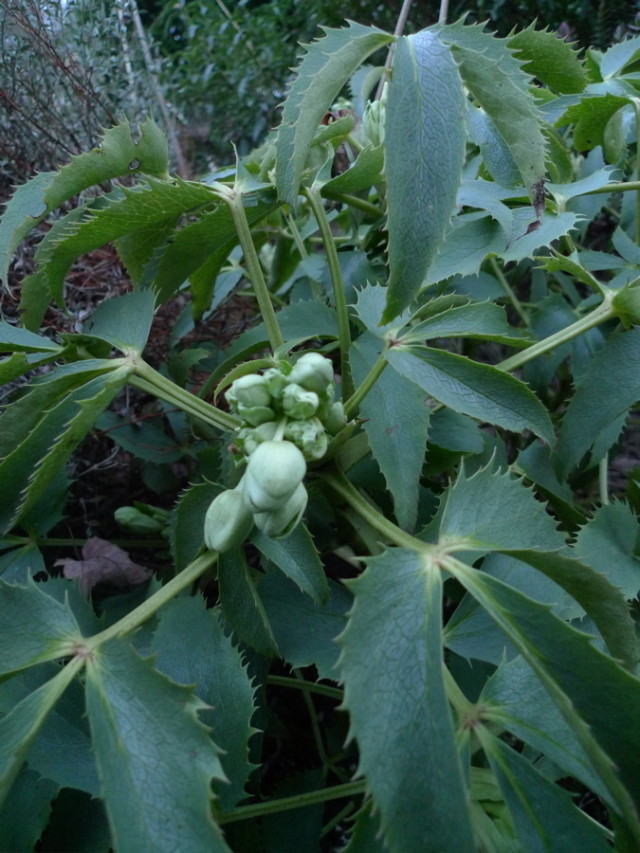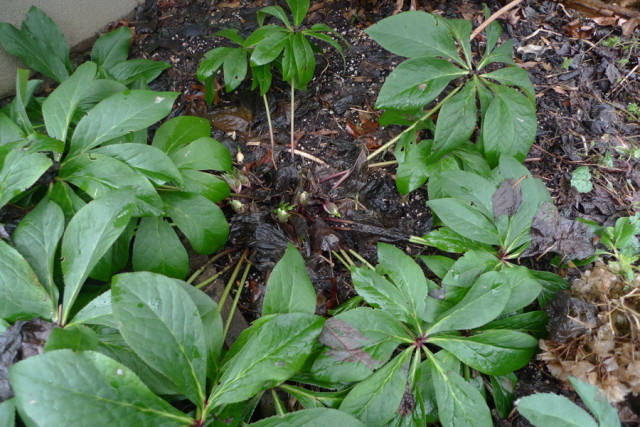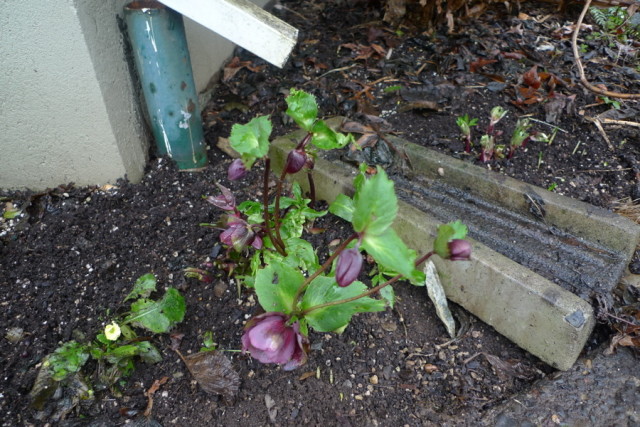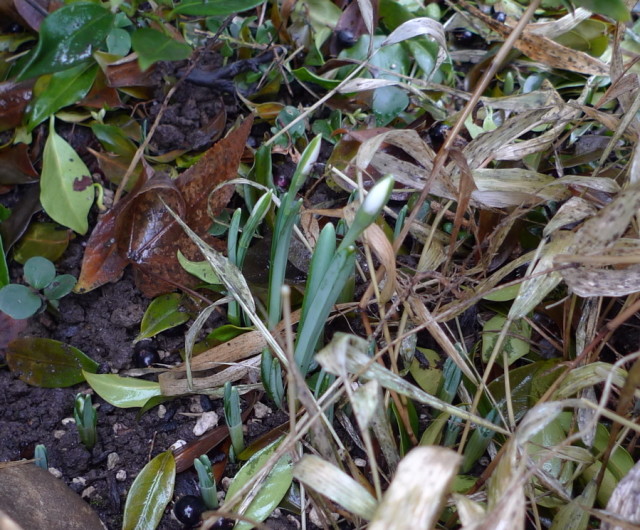Clean Up That Garden

Silver Lace Corsican hellebore (Helleborus argutifolius ‘Silver Lace’) just a week or two shy of cracking open its cupped, apple green blossoms. Like other “shrubby” hellebores, this one needs no trimming until after flowering is over.
Recently, accomplished gardener friends on Facebook have been proudly announcing that they have completed their late winter garden clean-up.
I usually wait til the first week of February to cut back ornamental grasses and tidy up for the bulbs. But this winter was particularly brutal – ornamental grasses were prematurely knocked down and the early freezes left dead leaves lingering like dirty hankies on trees and shrubs that usually drop them cleanly.
My thoughts may still be on the plants I saw in Mexico, but even I can now see what’s before me in my Portland garden: glistening white buds of snowdrop are appearing through a haze of dead foliage and my Lenten roses (Helleborus x hybridus) are way ready to be done with last year’s tatty old leaves.

At this time of the year, Lenten roses (Helleborus x hybridus) can look pretty scrappy. What to do? Use sharp clippers to cut off last year’s foliage at ground level – be careful to retain new flower buds rising from the center. Removing old helps keep new foliage free of fungal disease and removes the “clutter” so you can see the emerging flowers.
Garden clean-up is a subtle art and its timing is a bit different every year, depending on the weather and the gardener’s level of fervor. With the exception of old-fashioned peonies, irises, roses and certain other disease-prone plants, I leave old plant stalks and stems standing in winter to provide cover, perching posts and forage for birds and insects.

Lenten rose (Helleborus x hybridus) flowers are much easier to see when last year’s leathery old leaves have been cut off. At this point, they’re just barely showing their faces – in a month, they’ll be in their full finery.
But there comes a point when I’ve had it and I am suddenly sick of the sight of scrappy stems, seed heads that have been stripped bare by hungry birds and black, slimy leaves matting my garden beds. I want to see what’s new – every tiny green tip of the early bulbs pushing through the earth invigorates me more and I grab clippers and a rake.

It’s hard to see the tiny flower buds of these snowdrops (Galanthus) – that’s why I like to clean up the dried grasses and dead leaves around my bulbs at this time of the year. I wouldn’t want to miss any of the action!
Luckily, winter clean-up is an easy and very gratifying project! With clippers, I cut back the Lenten rose-type hellebores, grasses and other spent foliage that obscures the hopeful little green stems of early-rising bulbs. (If you don’t know what kind of hellebores you have, just remember: the ones to cut back in winter have flower stems rising on leafless stems, directly from the center of the plant. If the flowering stems have leaves on them, as with the Silver Lace type pictured above, wait until they are finished flowering to cut them back to the base – usually in April or May.)
After cutting last year’s foliage back, I rake up all the debris and plunk it in the shrub beds behind the garage or in my compost heap in the back yard. Keep in mind that those Lenten rose type-hellebore leaves will take longer to decompose, as they are kind of leathery so chop them up into smaller pieces or put them on the bottom of the pile so they break down faster. If you don’t have a compost pile or bin, you can always add the debris to your yard debris bin – but since any wet, dead leaves you raked up are half-way to compost anyway, you may as well keep them around to enrich your own garden soil.
{% display:image for:post image:4 align:left width:350 %}
